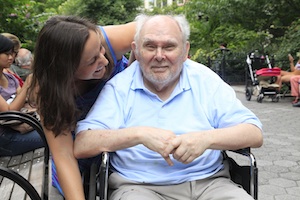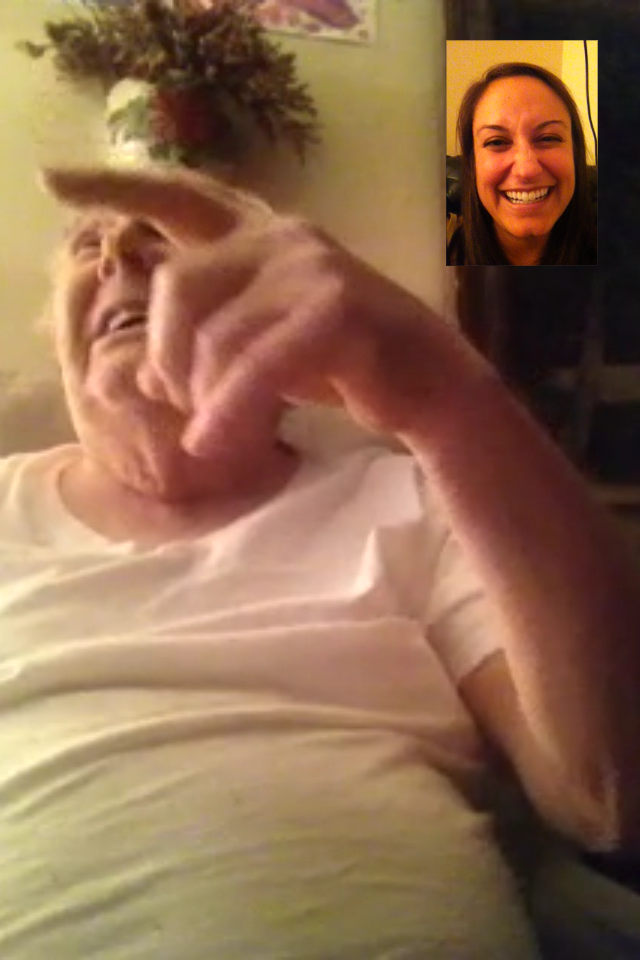AARP Hearing Center
Having My FaceTime With Arthur
By Laura Hahn, November 20, 2013 11:57 AM
I didn't know what to expect from my long-distance friendship with Arthur - but it wasn't this.

It's been three months since I moved from Brooklyn, N.Y., to small-town Ohio for grad school. It was tough telling friends I was leaving, especially Arthur, who had come to rely on my Friday visits.
Several weeks before the move date, I called our social worker Sasha at DOROT to strategize about how to break the news.
"When do you think I should tell him? Now? Or maybe give it a few more weeks? And how should I do it? Definitely in person, right? And just on a normal visit, not when we have plans to go to the theater or anything. Does that sound good? I'm a little nervous about how he'll take it. Will he be upset, or totally fine, or..."
There was a pause on the other end of the line.
"Laura, it's great that you're worried about him. It shows you care. But maybe we should strategize about how you are going to take it."
>> Sign up for the AARP Health Newsletter

OK, so I was a little nervous, too. I had come to rely on our visits, our moments each week when we'd talk about absolutely nothing and absolutely everything. I was technically volunteering, providing company for a homebound, potentially isolated older adult. That was the "purpose." But over the course of four years, our visits had become meaningful. We had become friends, confidantes.
We set up a phone schedule. I'd call every Wednesday and Friday at 2 p.m. And I did-until one day when his caregiver Abina came on the line. She told me DOROT couldn't send a new friendly visitor because Arthur's dementia had progressed considerably.

"Do you think they'd send someone over to help him FaceTime with me?" I asked Abina.
"Oh! Well, I can help you FaceTime. Just call my phone, and I will set it up for you."
It was that simple. So now, instead of phoning every Wednesday and Friday, I dial Abina. We have a chance to talk for a bit, then she props me up on the TV tray, in front of his favorite spot in the living room, and we talk.
I couldn't have imagined what a difference FaceTime would make. It's fun to try out new technology, sure, but this is more than that. Video chat has been a real game changer for our friendship. Here's how:
We talk longer. It used to be that Arthur would hang up the phone ("OK, goodbye.") after a minute or two. With FaceTime, our conversations last at least 15 to 20 minutes.
>> Stay sharp with help from the AARP Brain Health Center
I give him tours. I used to describe my New York City apartment to Arthur, but he never had a chance to see the place because his wheelchair couldn't make it up my third-floor walk-up. I wish we had thought of video chat! Now he's seen my Ohio apartment, my backyard-even my office on campus.
We see what we mean. Conversations are so much more than words exchanged. They are shared smiles and pauses and furrowed brows. With FaceTime, those are back in our vocabulary.
There's no substitute for in-person contact, but when you can't be there, FaceTime can help you feel much closer.
Do you use FaceTime or other video chat options, like Skype? How does it help you keep in touch?
Credit/top right photo: Briana E. Heard

Also of Interest
- Jeff Foxworthy: You Might Be a Caregiver If...
- Slideshow: 10 Common Spending Regrets
- Support Typhoon Haiyan Relief Fund to Aid Elderly Victims
- Join AARP: Savings, resources and news for your well-being
See the AARP home page for deals, savings tips, trivia and more































































